| In vitro: |
| Biosci Microflora. 2011;30(3):65-71. | | Dihydrodaidzein-producing Clostridium-like intestinal bacterium, strain TM-40, affects in vitro metabolism of daidzein by fecal microbiota of human male equol producer and non-producers.[Pubmed: 25045313] | Much attention has been focused on the biological effects of equol, a metabolite of daidzein produced by intestinal microbiota. However, little is known about the role of isoflavone metabolizing bacteria in the intestinal microbiota.
METHODS AND RESULTS:
Recently, we isolated a Dihydrodaidzein (DHD)-producing Clostridium-like bacterium, strain TM-40, from human feces. We investigated the effects of strain TM-40 on in vitro daidzein metabolism by human fecal microbiota from a male equol producer and two male equol non-producers. In the fecal suspension from the male equol non-producer and DHD producer, DHD was detected in the in vitro fecal incubation of daidzein after addition of TM-40. The DHD concentration increased as the concentration of strain TM-40 increased. In the fecal suspension from the equol producer, the fecal equol production was increased by the addition of strain TM-40. The occupation ratios of Bifidobacterium and Lactobacillales were higher in the equol non-producers than in the equol producer. Adding isoflavone-metabolizing bacteria to the fecal microbiota should facilitate the estimation of the metabolism of isoflavonoids by fecal microbiota.
CONCLUSIONS:
Studies on the interactions among equol-producing microbiota and DHD-producing bacteria might lead to clarification of some of the mechanisms regulating the production of equol by fecal microbiota. | | Biosci Biotechnol Biochem. 2013;77(11):2210-7. | | Transport mechanisms for soy isoflavones and microbial metabolites dihydrogenistein and dihydrodaidzein across monolayers and membranes.[Pubmed: 24200780] | Isoflavone data concerning the metabolism and permeability on intestinal epithelial cells are scarce, particularly for microbial isoflavone metabolites.
METHODS AND RESULTS:
This study evaluates the absorption mechanisms for the isoflavones, genistein and daidzein, and their microbial metabolites, dihydrogenistein (DHG) and Dihydrodaidzein (DHD). The permeability characteristics of isoflavones were compared by using the Caco-2 human colon adenocarcinoma cell line for a parallel artificial membrane permeability assay, and comparing their physicochemical properties.
CONCLUSIONS:
The data suggest that genistein, DHG and DHD were efficiently transported by passive diffusion according to the pH-partition hypothesis. Genistein was conjugated by phase II metabolizing enzymes and acted as a substrate of the breast cancer resistance protein (BCRP). Daidzein was not conjugated but did act as a substrate for BCRP, multidrug resistance-associated proteins, and P-glycoprotein. In contrast, DHG and DHD were markedly more permeable than their parent isoflavones; they were therefore difficult to transport by the efflux effect, and glucuronidation/sulfation was limited by the flux time. |
|


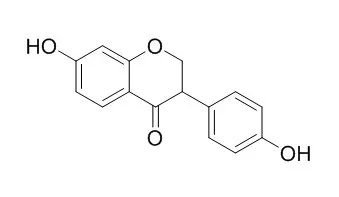

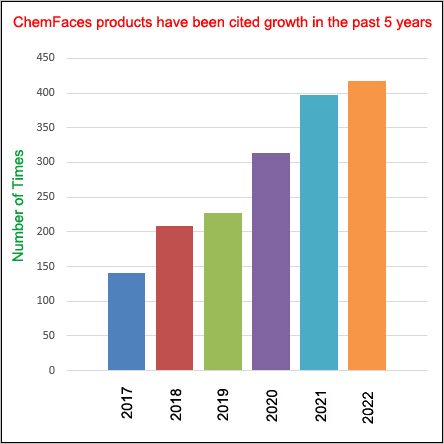
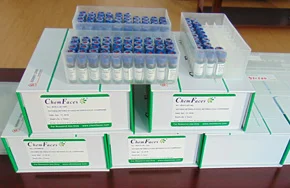
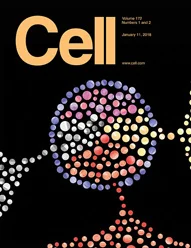 Cell. 2018 Jan 11;172(1-2):249-261.e12. doi: 10.1016/j.cell.2017.12.019.IF=36.216(2019)
Cell. 2018 Jan 11;172(1-2):249-261.e12. doi: 10.1016/j.cell.2017.12.019.IF=36.216(2019)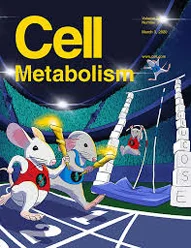 Cell Metab. 2020 Mar 3;31(3):534-548.e5. doi: 10.1016/j.cmet.2020.01.002.IF=22.415(2019)
Cell Metab. 2020 Mar 3;31(3):534-548.e5. doi: 10.1016/j.cmet.2020.01.002.IF=22.415(2019)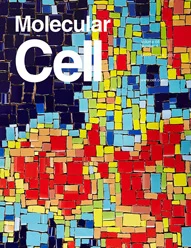 Mol Cell. 2017 Nov 16;68(4):673-685.e6. doi: 10.1016/j.molcel.2017.10.022.IF=14.548(2019)
Mol Cell. 2017 Nov 16;68(4):673-685.e6. doi: 10.1016/j.molcel.2017.10.022.IF=14.548(2019)